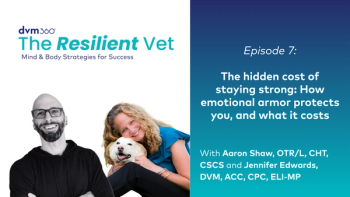
- dvm360 August 2021
- Volume 52
6 Ways to keep sexual harassment out of your workplace
Protect yourself and coworkers by learning the toxic behaviors of workplace harassment, including sexual harassment, and how to foster a safe space for your team members to thrive in.
Workplace harassment, including sexual harassment, remains a persistent and often unreported problem across many professions, and veterinary medicine is no exception. Not only does it extract a steep cost from those who are harassed; it also harms our workplaces, creates toxic work environments, and leads to decreased productivity, increased turnover, and reputational harm for the workplace.
The well-being of our veterinary colleagues depends on all of us working to address this issue. We can’t expect harassment to stop on its own, but we can all work to combat it. Here are 6 concrete actions each of us can take to kick workplace harassment to the curb.
1. Commit to a culture of respect
Organizational culture can be the greatest factor in influencing the prevalence of workplace harassment. A workplace culture that puts a premium on respect, diversity, equity, and inclusion can yield an environment with fewer incidents of harassment.
Every team member can commit to championing a culture of respect. For employers, it’s critical to ensure that each team member is held accountable for negative behavior, even seemingly small transgressions should not go unchecked. Beyond that, consider publicly acknowledging and rewarding individuals who go above and beyond in fostering a positive, respectful work environment.
2. Lead by example
An organization’s culture is indelibly linked to its leadership. It relies heavily on whether the organization’s leaders buy into the culture themselves. That means it’s especially important for practice leaders to model appropriate behavior and address any situation in which a team member is not adhering to your practice’s expectations.
3. Implement formal policies and procedures
Clear policies are vital. They delineate what is and is not acceptable behavior across all levels of your organization. Because harassment can include subtle actions as well as overt behaviors, it’s important to outline and educate team members about the range of inappropriate comments and actions.
Implementing straightforward procedures for addressing harassment is also critical. Team members should be able to easily report—and managers quickly respond to—any instance of harassment. Another benefit of set procedures is that they can also help keep you and your organization from falling into a frantic "crisis mode" if a situation arises that must be addressed.
4. Enforce accountability
Even the best policies are all but useless if they aren't enforced in a timely and meaningful way. When an organization enforces its harassment policies, it demonstrates upper management's commitment to creating a harassment-free environment. It gives team members confidence that these policies and procedures will be upheld in the future, too, should they ever need the support themselves.
5. Revamp training
Training is an essential part of education—as all veterinarians know. The most effective training is interactive and dynamic. Traditional sexual harassment training focuses primarily on anti-discrimination laws and legal implications, which many experts believe make it less impactful. Instead, training should be a more holistic tool to help build the organizational culture you desire—one of respect and inclusion.
Training sessions should be conducted regularly for all employees and should address situations that are likely to arise in your specific work environment. One option is to consider offering team members the opportunity to anonymously submit scenarios for discussion, which they themselves have experienced. Bystander training—which empowers people to take action when they witness harassment—has been shown to be a particularly effective method.
6. New tools to leverage
Every veterinary workplace and every veterinary team member can play a vital role in combating harassment, including sexual harassment. The good news is that we all have access to a wide range of resources that can help with everything from drafting and implementing workforce policies, to training ourselves and our teams.
- Policy: If you’re not sure where to start in reviewing or writing a workplace policy to address harassment and discrimination, the AVMA has
guidelines to help you develop a specific policy tailored to the circumstances of your individual workplace. - Training: The CE library on
AVMA Axon ® includes sexual harassment prevention training, andAVMA PLIT also offers a training module. AVMA also provides a state-by-state list of training requirements related to sexual harassment prevention. - Culture: Two full certificate programs are available through AVMA Axon® to help veterinary managers and team members build healthy, welcoming workplaces. The
Brave Space program focuses on creating healthier, safer, more inclusive organizations, and includes a dedicated module on preventing workplace harassment. TheWorkplace Wellbeing program prepares participants to build a culture that supports individual and team wellbeing.
AVMA's resource center for diversity, equity, and inclusion (DEI) includes a dedicated webpage on preventing sexual harassment, connecting veterinary professionals to all these resources, and more. Find it at
Eliminating workplace harassment, including sexual harassment, benefits everyone across veterinary medicine. And everyone in our profession can play a role in putting a stop to it.
Jen Brandt, MSW, LISW-S, Ph.D., is the director of wellbeing, diversity, and inclusion initiatives at the American Veterinary Medical Association.
Articles in this issue
about 4 years ago
Case report: canine spinal cord nephroblastomaover 4 years ago
Extraocular myositis in a young pit bullover 4 years ago
Minimalist design, maximum effectover 4 years ago
IVSA and Vetstream announce a collaborative partnershipover 4 years ago
Pet Releaf debuts professional product line with SentesaNewsletter
From exam room tips to practice management insights, get trusted veterinary news delivered straight to your inbox—subscribe to dvm360.




